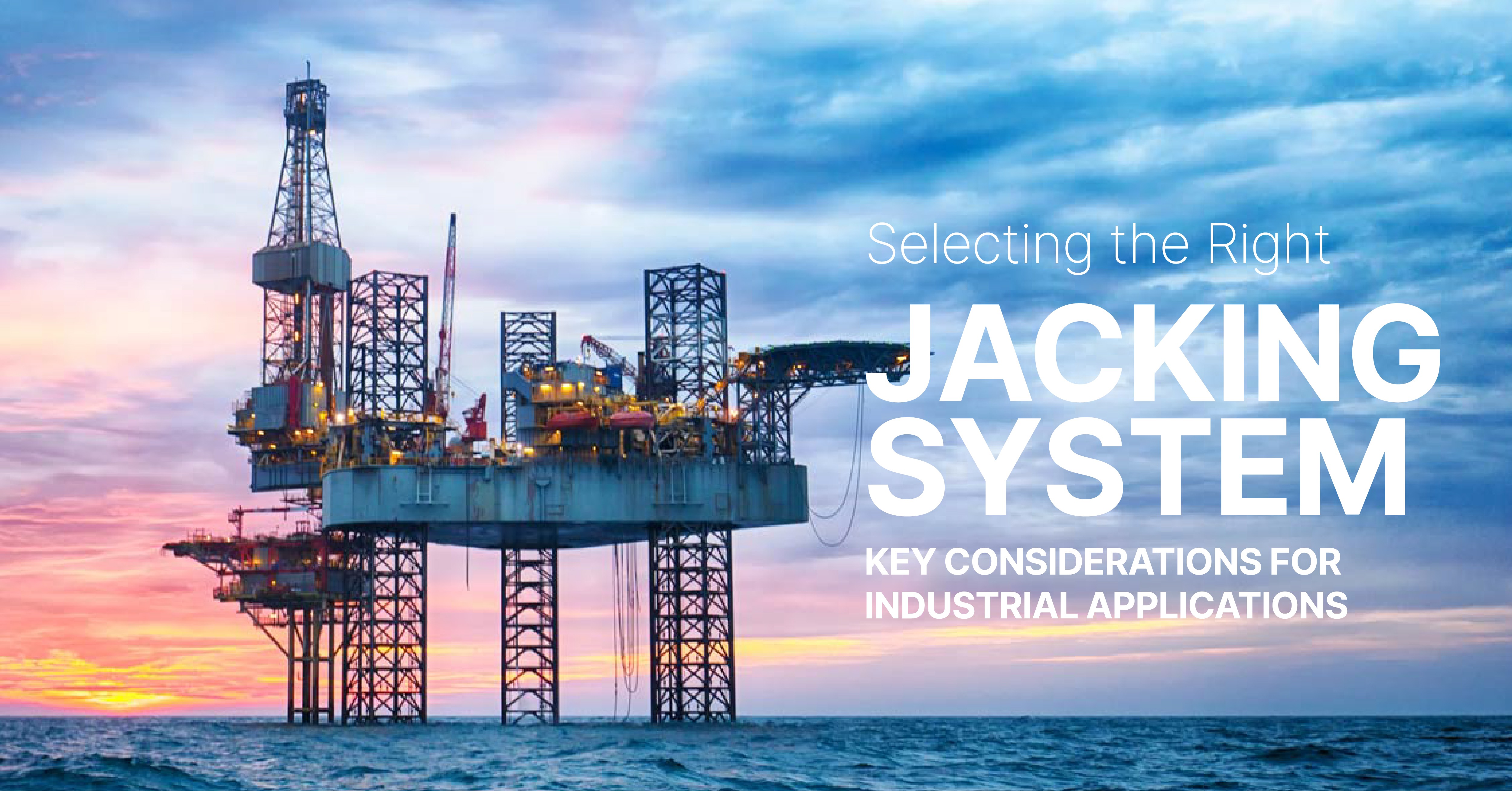Selecting the Right Jacking System: Key Considerations for Industrial Applications

In industrial operations where precision lifting is critical—be it for heavy machinery, infrastructure construction, or transportation—jacking systems play a vital role. A jacking system is a mechanical device or an integrated set of devices used to lift, align, or position heavy loads safely and efficiently. They are widely used in various sectors, including oil and gas, power, construction, aerospace, shipbuilding, and manufacturing, among others.
Whether you're handling a bridge launch, machine installation, or maintenance of plant equipment, choosing the right jacking system can significantly impact operational efficiency, safety, and cost-effectiveness.
This article explores the types of jacking systems, and the key considerations when selecting a system, offering expert tips to help make informed decisions.
Key Considerations for Selecting the Right Jacking System
When choosing a jacking system for industrial applications, it’s important to evaluate several critical parameters:
1. Load Capacity and Type
Understand the total weight to be lifted and how it's distributed. Some applications require synchronized lifting for uneven or shifting loads. Overloading a system can lead to mechanical failure or safety hazards.
2. Lifting Height and Stroke
Each system has a defined stroke length—the maximum height it can lift. Ensure the system can accommodate your lifting height requirements without overstressing the equipment.
3. Operating Environment
Assess environmental conditions such as temperature extremes, dust, moisture, or chemical exposure. These factors influence material selection and the type of jack suited to the site.
4. Precision and Control
For applications demanding accurate positioning—like bridge alignments or turbine setups—systems offering fine control, such as screw jacks or electric jacking systems, are more suitable.
5. Speed of Operation
Depending on urgency, the speed of lifting can be crucial. Hydraulic jacks generally offer quicker operation, while mechanical jacks provide better control at a slower pace.
6. Power Source Availability
The availability of electric, hydraulic, pneumatic, or manual power will determine which system fits your site conditions. Some projects may require portable manual jacks, while others benefit from fully automated electric systems.
7. Safety Features
Look for jacks with built-in safety mechanisms like load-holding valves, mechanical locking, and overpressure protection to prevent accidents during lifting operations.
Types of Jacking Systems
Knowing the various types of jacking systems can help you align your choice with your specific application:
1. Hydraulic Jacking Systems
Favored for their high load capacity and fast operation, hydraulic jacks are used extensively in heavy-duty tasks such as bridge construction, vehicle lifting, and equipment installation.
2. Mechanical Screw Jacking Systems
These offer excellent load-holding capability and precise control, ideal for applications that demand slow, steady lifting with minimal slippage.
3. Electric Jacking Systems
Electric systems are ideal for automated and repeatable processes, providing exact control with feedback mechanisms for position tracking and synchronized lifting.
4. Pneumatic Jacking Systems
These operate using compressed air and are typically chosen for environments requiring clean, oil-free operation, such as food processing or pharmaceutical facilities.
5. Synchronized Jacking Systems
These systems are designed to lift loads evenly using multiple jacks controlled from a central unit. Perfect for large-scale structural lifts, synchronized systems prevent uneven lifting and associated damage.
Tips for Choosing the Right Jacking System
Here are some expert suggestions to ensure the right system is selected:
- Consult Specialists: Engage with experienced engineers or solution providers who can assess your application and recommend the best fit.
- Look Beyond Price: Factor in long-term reliability, maintenance needs, downtime risk, and total cost of ownership.
- Prioritize Safety: Ensure the system complies with safety standards and has adequate protective features.
- Evaluate Scalability: Consider whether the system can be adapted or expanded for future requirements.
- Choose Customization: Some applications may require customized jacking solutions —tailored systems designed specifically for your operating conditions.
Conclusion
Choosing the right jacking system is critical to achieving safe, efficient, and cost-effective industrial operations. From hydraulic to electric, mechanical to pneumatic, the right solution depends on your specific application, environment, and technical demands.
To ensure success, always take a holistic view: evaluate load conditions, site constraints, control requirements, and safety parameters. And whenever possible, consult experts who can guide you through installation, commissioning, and maintenance support—ensuring that your jacking system operates seamlessly from day one.
With the right approach, your jacking system can become a reliable asset in achieving operational excellence across a wide range of industrial applications.